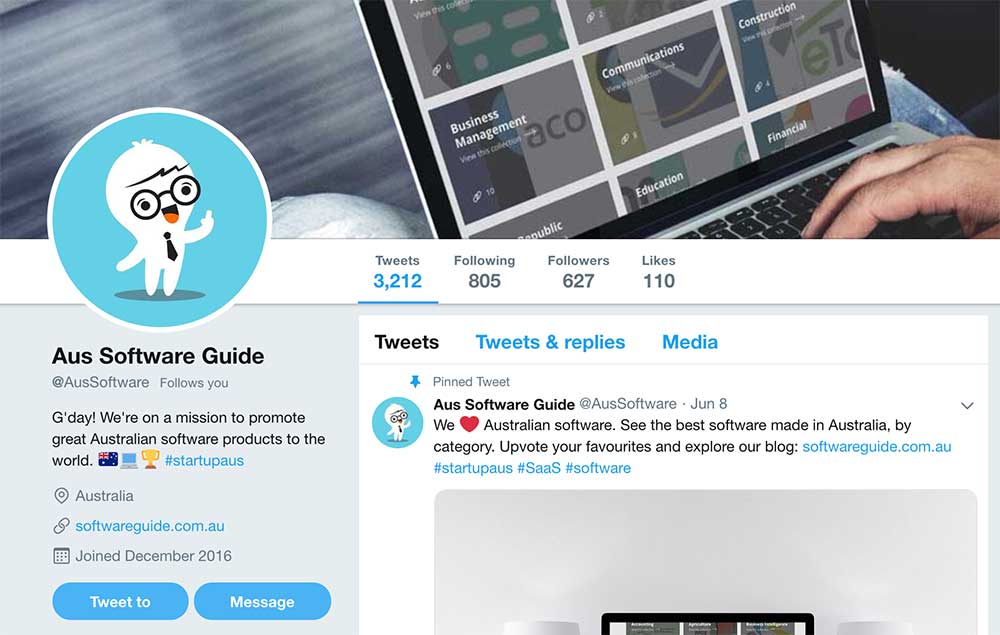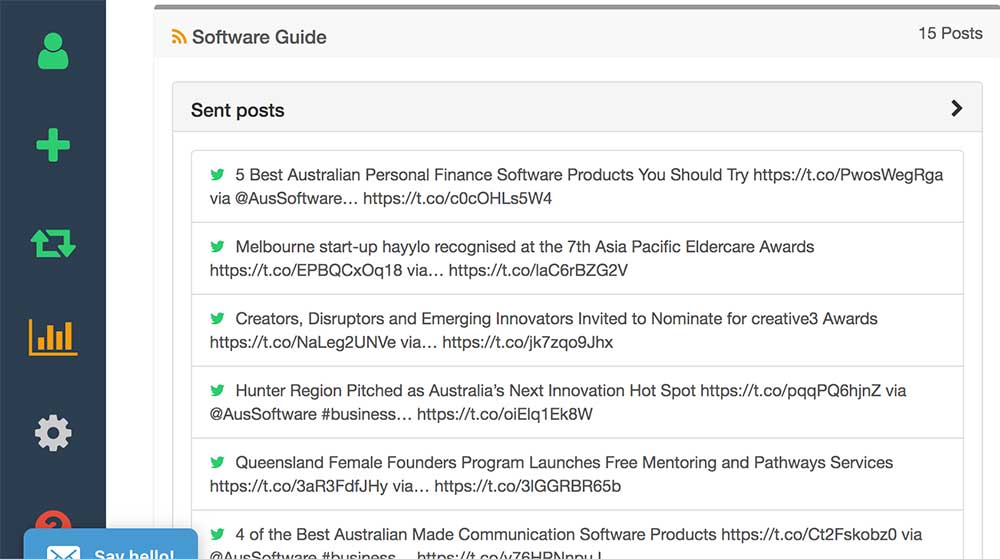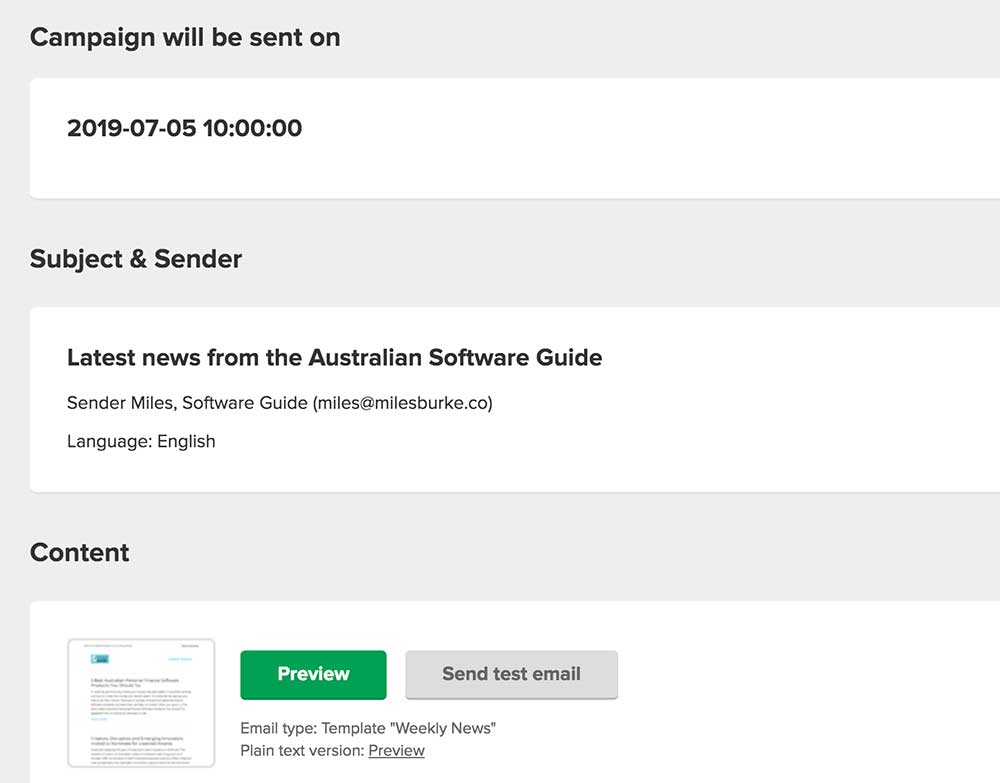A while back, I did a series of posts on why you didn’t need a lot of money when building a side project. This time, let me take you through why you don’t need a lot of time.
If you haven’t read about my $99 startup, you can see the articles here.
The lesson I’m sharing in this article is that you don’t have to invest a truckload of hours immediately, when you start building a side project. Sometimes sitting on a half finished website can reap benefits. Let me explain.
I’ve recently put some more effort into a side project I haven’t mentioned here before; a niche directory website focused on software products made in Australia.
I say ‘some more effort’, because it’s been in the works since 2016, however for the 3 years prior to May, I’d spent a total of maybe five hours on it.
Let’s start with a timeline of possibly the slowest burn side hustle ever, then cover the current status and expenses, and finally look at a few time saving tricks, to keep this side project to minimal hours.
Slow Side Project Timeline
Here’s the gory details of the three years it has taken to get to where I am with this. The main reason for this was due to my full plate with business concerns, as well as a number of personal issues that affected my time. I don’t recommend leaving it three years when building a side project – this is just what I managed to do here.
2016
July 2016: Write an email to myself with dot points on why this may work (and why it may not).
Nov 16: Registered the domain name, softwareguide.com.au.
Dec 16: Installed WordPress, and set up the Twitter account.

Software Guide on Twitter
2017
Jan 17: Wrote and published first blog post
Mar 17: I wrote and published another blog post
July 17: I created a quick logo (same as what I am still using)
Dec 17: I purchased and installed the current theme
2018
Jan 2018: Added 58 software products in as listings
May 2018: Made a small bunch of SEO tweaks to the site
2019
This is the year where the work really starts.
April 19: Set up email newsletter
May 19: Removed 17 old listings, and wrote and published two blog posts
May 19: Added 2 new blog posts
Jun 19: Added 27 new software product listings
Jun 19: Published 10 new blog posts
Current state
The website is looking a lot better, with more than a dozen blog posts of content, plus over 80 products listed in the directory.
The website is starting to get some decent traffic, especially given the lack of effort over the three years up until now.
In June, the Australian Software Guide attracted 5,619 unique users, who visited an average of 3.56 pages each, bringing it up to 20,609 page views.

Google Analytics, June 2019
Time saving tricks when building a side project
I thought I’d share some time saving tricks I use, when building a side project. Here they are, in no particular order.
Give yourself limited time
I could easily spend a few evenings a week working on my side projects, and have done this in the past. However, that’s not the healthiest way to live – spending all day in an office and then doing more work in your home office every evening.
I’m a big believer in Parkinson’s Law, which I have previously written about. Basically, the law explains your work will expand to fit the time you allocate to it.
Instead of scheduling days per week, I like to “time box” my week in advance. I’ll set aside say 1-2 hours for this side project, 1-2 hours for personal writing, etc. That way, being acutely aware of my time limits, I tend to only focus on the highest value tasks at a time.
This article on Mindtools spells this method out well “For yourself, this ensures that you don’t spend too long on a task that isn’t worth the effort. For team members, it helps to ensure that they don’t over-engineer solutions, and that they don’t, unintentionally, blow the budget you have available for the work.”
Automatically share posts to Twitter
Twibble to post new posts from RSS, as well as share posts from related media outlets automatically. tweeted over 3,000 times to my 600 followers so far.

Twibble
Schedule other social media in advance
If you’ve read my blog for a while, you know I have previously written about sharing blog posts on social media. As evident in that post, I am a big fan of social media scheduling software. With the right software, I can schedule posts across LinkedIn, Facebook and Twitter ahead of time, and then just keep monitoring for replies and engagement. You’ll find this cuts your workload significantly doing it this way.
Slow is good for SEO
I could have waited until I had it all ready, and then published and immediately started building back links. The issue with this approach, is Google watches for unusual back links and SEO behaviour, and I this website could be penalised if it looked like ‘web spam’. By slowly building it, I’m giving it a better chance of being organic.
As it stands, leaving it for a very long time (this timeline is not recommended!) I have a website now getting traffic to it like the following Google Analytics screen grab shows.

Google Analytics, June 2019
Set up automated RSS to email newsletter
I have used a stack of email marketing tools over the last twenty years, and I am a huge fan of Mailerlite. They provide so much more on their free plan than others, and they have excellent support.
One of the features I enjoy is setting up an RSS campaign, so with a little bit of setup, Mailerlite will automatically send out an email newsletter every week, with any new posts. You don’t even need to log in!

Mailerlite
Summary
Building a side project should be that balance between investing little in actual money, as well as being mindful of the current and potentially future time allocations required. It’s quite possible to create a side project on limited time.
You don’t need to spend thousands of hours creating a side project, just like you don’t need to take out a second mortgage.

 Entrepreneur,
Entrepreneur, 